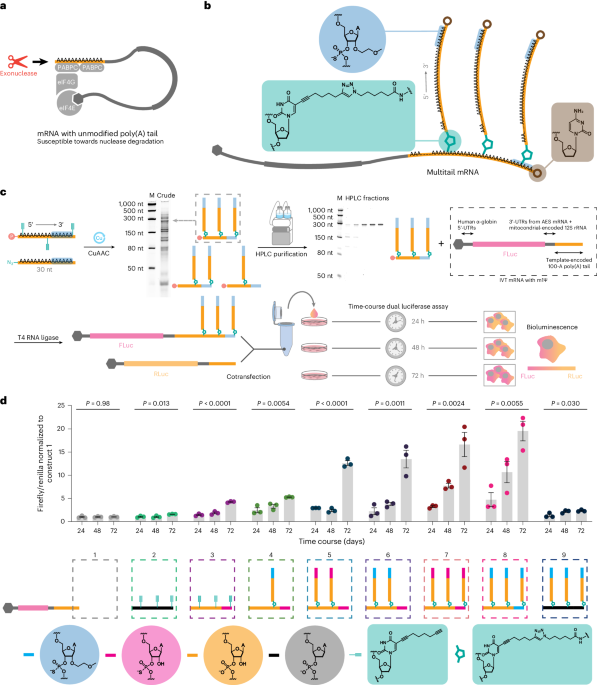[ad_1]
“The lancet liver fluke is the poster child of parasite manipulation of host behavior,” said Brian Lund Fredensborg, a parasite ecologist and associate professor at the University of Copenhagen’s Department of Plant and Environmental Sciences, who with former graduate student Simone Nordstrand Gasque, recently published a study on the role of environmental factors in switching the ants’ zombielike behavior back to normal.
The lancet liver fluke and other parasites are organisms that live on — or in — host organisms and depend on their hosts for sustenance.
Although the study in the journal Behavioral Ecology is not directly applicable to humans, parasites generally exact a huge disease burden globally, and growing insights about parasitic behavior could increase scientists’ knowledge about their level of sophistication, especially when it comes to interacting with their hosts.
“Knowing more about them could enhance our understanding of how other behavior-manipulating parasites work, maybe including some that infect humans,” Fredensborg said. The lancet liver fluke rarely infects humans, and it does not affect the human brain, he added.
Here’s how the lancet liver fluke’s story unfolds: An ant eats some flukes, and a lone self-sacrificing fluke — the worm dies in the process — migrates to the ant’s brain, infecting and essentially hijacking it. Hundreds of others invade the insect’s abdomen where they temporarily hide in a capsule they create that protects them from the ant’s stomach acid.
The fluke in the brain heads to the ant’s suboesophageal ganglion, part of its central nervous system, and causes the infected insect to climb to the top of a blade of grass in the cool of dawn or dusk, clamp its jaws around the blade and stay there. (The researchers refer to the ant’s actions as “a reversible and radical behavioral change.”) When cattle, sheep or deer come to graze, they eat the ants along with the grass, and the worms settle into the larger animal’s liver.
There, the worms lay eggs, which are later excreted in the host animal’s feces. The feces, in turn, are eaten by snails, the fluke’s final destination. Larval flukes reproduce inside the snails, multiplying by the thousands. Eventually the snails cough them out in a ball of mucous, drawing ants. The bugs feast upon the fluke-infested slime, and the cycle starts all over again.
“Changing the behavior of your host is a smart way for a parasite to increase the chance of reaching the next host in the life cycle,” Fredensborg says. “It is particularly common where a parasite needs one host to be eaten by the next. Parasites in nature influence who eats what and how much in a subtle way, but with important ramifications to how ecosystems function. The big question is how parasites manage to take control over host behavior.”
What’s different about this study
Some scientists speculate that the process involves manipulating certain brain chemicals.
Fredensborg cites one human example, toxoplasma gondii, a parasite found in undercooked meat and cat feces. Research suggests it may affect the function of dopamine and promote the development of schizophrenia. Dopamine, which is produced in the brain, is important for many body functions — movement, for example — and is implicated in several mental health and neurological diseases. Fredensborg stresses, however, that the workings of these parasites are quite different.
“The behavior changes themselves are not similar between the host Toxoplasma and ants infected with the lancet liver fluke, but the underlying mechanisms may be,” Fredensborg says. “Both lodge themselves in the brain, and in a location suited to manipulating a specific set of behaviors. In Toxoplasma, we know that dopamine is involved. In the lancet liver fluke we do not yet know what neuromodulators are involved, but dopamine is one of the main suspects because it induces novelty seeking and biting behavior.”
Wondering if they could tinker with the infected ants’ behavior, Fredensborg and Gasque combed the Bidstrup Forests near Roskilde, Denmark, tagging ants for study — not an easy task.
“Simone became a true master at finding and tagging the infected ants in the forest, but it was definitely a challenge in the beginning to place a droplet of glue and the tag on the behind of ants without sticking the tag or the ant to your own finger,” Fredensborg says.
The scientists discovered that air temperature mattered. At dawn and dusk, when it was cool and when most animals like to graze, the ants were more likely to remain attached to the top of the blade and be eaten. When it got hotter, they let go and crawled back down. “We joked about having found the ants’ ‘zombie switch,’” Fredensborg says.
The lancet liver fluke isn’t the only worm that induces behavior attractive to predators, Fredensborg says. Microphallus papillorobustus migrates to the brain of amphipods — small aquatic crustaceans — causing them to seek light and move upward to the water’s surface, where they swim erratically, cling to vegetation — and are then eaten by ducks.
Euhaplorchis californiensis lodges in the brains of killifish, prompting erratic behavior that draws herons. Fasciola hepatica is common in livestock, including in the United States, but rarely found in humans, although people can pick it up from tainted watercress or drinking water, Fredensborg says.
“This research shows that natural selection has fine-tuned this takeover of the host to synchronize it with the activity patterns of the next host in the parasite’s life cycle,” says Robert Poulin, evolutionary ecologist and professor of zoology at the University of Otago in New Zealand, who was not involved in the study. “Cool temperature is the trigger for the parasite to assume control and get the ant to climb up a grass blade at the time when a grazing animal is most likely to be feeding, whereas warm temperatures cause the parasite to release its control of the ant and allow it to resume normal behavior and avoid overheating.”
Poulin, who supervised Fredensborg’s doctoral research years ago, characterized the worm’s actions as “a conditional manipulation” driven by external temperatures. “I cannot think of another example like this one, although this may just be because we have not looked hard enough,” Poulin says. “Who said that parasites were simple and degenerate creatures? They are amazing.”
The findings suggest that the environment can be engineered to return the ants back to normal.
“Inducing a reversible radical change of behavior — flipping the switch — is probably unique to the lancet liver fluke,” Fredensborg says. “However, our hope is that this ability may help us characterize how parasites change host behavior by comparing the neurochemistry of ‘switched on’ with ‘switched off,’” and drawing a link between infection of the host, its brain changes and subsequent behavior.
Maqvi News #Maqvi #Maqvinews #Maqvi_news #Maqvi#News #info@maqvi.com
[ad_2]
Source link


















































